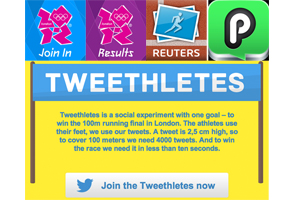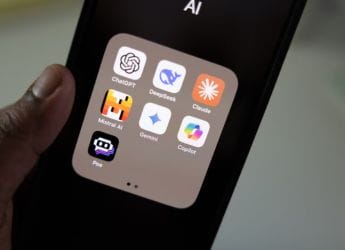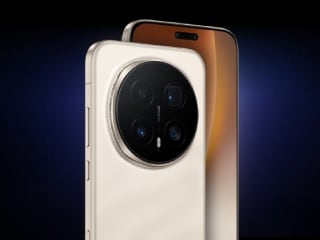- Home
- Social networking
- Social networking News
- With Olympics backdrop, Twitter goes for gold in ad strategy
With Olympics backdrop, Twitter goes for gold in ad strategy

In sharp contrast to Google, which initially built its businesses mostly by persuading thousands of small companies to buy "direct response" ads, Twitter's emerging strategy focuses on selling elaborate brand campaigns to major marketers such as Procter & Gamble Co and Verizon Communications.
The Olympics have presented a prime opportunity for Twitter to position itself as a new media channel that complements TV broadcasts and carries the big name ads to match.
"We can service the very biggest brands in the marketplace," Adam Bain, the company's president of revenue and key advertising strategist, said in a recent interview. "The conversation that's happening on TV, or happening live is also happening on Twitter. That's very valuable."
Courting major brands is an unusual play for a six-year-old company that private investors value at more than $8 billion but has yet to prove its financial viability. It often takes years to persuade the biggest advertisers to try a new publication or TV show, much less a completely new medium that requires a different creative approach.
The challenge is evident in Facebook's fitful efforts to woo marketers such as General Motors, which jolted the social network by pulling back from paid ads just before Facebook's IPO in May.
GM and Facebook are now talking again, and Facebook recently began a boot camp at its Menlo Park campus where marketers can meet with engineers to collaborate on ad campaigns. But as of 2011, brand campaigns still accounted for less than 40 percent of Facebook's $3.7 billion in revenue, according to estimates by eMarketer.
Even Google, which revolutionized direct response ads by showing them next to search results and has reaped huge profits in the process, has not fully cracked the code when it comes to big brands.
But the advertising giants say their early experiments with Twitter have shown remarkable results.
Consider the case of PepsiCo, which spent $640 million in 2011 on marketing, according to Kantar Media. Beginning late last year, about a dozen Twitter staffers led by Bain flew to PepsiCo's offices in Purchase, New York, for a series of brainstorming sessions.
Armed with data gleaned from Twitter chatter, the two companies drew up a plan to use Twitter as a centerpiece for a massive rebranding campaign, "Live for Now," that tied the soft drink to pop music stars and played up its youth appeal.
As the campaign unfurled in June, Pepsi rolled out a series of music videos on its Twitter page based on which artists were most discussed on Twitter, and doled out downloads for hit songs. In late June, Pepsi threw a Katy Perry concert in Hollywood that was live-streamed within a tweet on Pepsi's Twitter page.
The company also paid Twitter to boost the reach of select "promoted tweets," which garnered 68 million impressions in one day.
About 24 percent of users who saw Pepsi's paid tweets clicked, replied to or helped broadcast the tweets a rate that deeply impressed Pepsi.
"We saw some phenomenal results with those ad products," said Shiv Singh, the global head of digital marketing for Pepsi Beverages. Singh said it was "extremely likely" that Pepsi will ramp up its spending on Twitter.
Where the big dollars lie
Twitter's focus on brand marketing, which aims to create a positive association with a product rather than prompt an immediate purchase, underscores a long-standing issue in the online advertising world.
About 60 percent of the total $150 billion spent on advertising in 2010 went toward brand marketing campaigns, according to comScore. But in the online world, the vast majority of the roughly $30 billion in ad spending went toward direct response ads that generate leads or drive sales directly.
Google's search ads are the dominant form of online direct-response advertising, but traditional banner ads are also often judged on how many people click through and take action.
"The biggest bucket that's untapped in digital advertising is brand marketing," said Jonah Goodhart, the founder of advertising technology company Moat Inc.
What may enable Twitter to tap that bucket is its growing "second-screen" appeal. The Olympics deal with NBC is aimed at offering Twitter denizens tweets from athletes and other content that complement the TV broadcasts. Procter & Gamble, for one, has straddled the two media during the Olympics, using promoted tweets to solicit feedback about a TV ad shortly after it runs on NBC.
Meanwhile, Twitter has struck a similar deal with NASCAR, while Twitter's Hollywood liaisons are pushing TV studios to create Twitter apps that accompany popular shows.
"If you have a service that naturally lends itself to being at the center of big media-event conversations, you go where the big money is," said John Battelle, founder of Federated Media Publishing, an online ad network.
At the center of Twitter's ad push has been Bain, a 38-year- old advertising and sales executive who rose through the ranks at News Corp beginning in 1999 and was eventually tapped to build an advertising network across all of News Corp's digital properties, including MySpace.
Although MySpace faded amid competition from Facebook, Bain emerged with his reputation burnished and a deep Rolodex of Madison Avenue contacts.
"His singular strength was that he's the perfect combination of a salesman and a tech person," said Peter Chernin, the Hollywood film producer and the longtime No. 2 at News Corp. "The people who build technical products, usually none of them can sell."
Bain has built a sales team that now accounts for nearly a quarter of Twitter's roughly 1,000 employees. Rows of MacBook-toting advertising employees now occupy a swathe of the seventh floor in Twitter's hulking new office building on San Francisco's Market Street.
They are also dispersed in locations like Atlanta and Austin, where staffers watch over major accounts like Coca-Cola and Dell Inc. Earlier this year, the company poached Shailesh Rao, who formerly oversaw Google's Asia-Pacific business, to court overseas advertisers.
Bain also hired Joel Lunenfeld, an interactive advertising executive from Atlanta, to oversee creative and engineering teams who actively pitch ideas to Fortune 100 companies.
"Adam and Dick have been consistent and open about what works on Twitter and what doesn't," said Noah Mallin, vice president of social marketing at Digitas. "Advertisers trust them. That really goes a long way."
Twitter's transition from quirky tech start-up to glitzy media power has alienated some of its long-time fans in the tech world who would like the company to function more as a platform for independently developed social media services.
Its Olympic journey has had some bumps as well. The company came under fire again this week for banning a British journalist who was critical of NBC and tweeted an executive's email address, leading commentators to question whether Twitter compromised its values to side with a business partner. Twitter later apologized and reinstated the account.
But from an advertising standpoint, Twitter's priorities were perhaps most clearly displayed at a recent European event: the annual Cannes Lions advertising festival.
A massive banner hung over the festival's main event hall, featuring the company's blue bird logo and the hashtag: "#CannesLions," Bain said.
The message to marketers was that all the festival's chatter was "also happening on Twitter."
Copyright Thomson Reuters 2012
Get your daily dose of tech news, reviews, and insights, in under 80 characters on Gadgets 360 Turbo. Connect with fellow tech lovers on our Forum. Follow us on X, Facebook, WhatsApp, Threads and Google News for instant updates. Catch all the action on our YouTube channel.
Related Stories
- Samsung Galaxy Unpacked 2025
- ChatGPT
- Redmi Note 14 Pro+
- iPhone 16
- Apple Vision Pro
- Oneplus 12
- OnePlus Nord CE 3 Lite 5G
- iPhone 13
- Xiaomi 14 Pro
- Oppo Find N3
- Tecno Spark Go (2023)
- Realme V30
- Best Phones Under 25000
- Samsung Galaxy S24 Series
- Cryptocurrency
- iQoo 12
- Samsung Galaxy S24 Ultra
- Giottus
- Samsung Galaxy Z Flip 5
- Apple 'Scary Fast'
- Housefull 5
- GoPro Hero 12 Black Review
- Invincible Season 2
- JioGlass
- HD Ready TV
- Laptop Under 50000
- Smartwatch Under 10000
- Latest Mobile Phones
- Compare Phones
- Honor Win RT
- Honor Win
- Xiaomi 17 Ultra Leica Edition
- Xiaomi 17 Ultra
- Huawei Nova 15
- Huawei Nova 15 Pro
- Huawei Nova 15 Ultra
- OnePlus 15R
- Asus ProArt P16
- MacBook Pro 14-inch (M5, 2025)
- OPPO Pad Air 5
- Huawei MatePad 11.5 (2026)
- Xiaomi Watch 5
- Huawei Watch 10th Anniversary Edition
- Acerpure Nitro Z Series 100-inch QLED TV
- Samsung 43 Inch LED Ultra HD (4K) Smart TV (UA43UE81AFULXL)
- Asus ROG Ally
- Nintendo Switch Lite
- Haier 1.6 Ton 5 Star Inverter Split AC (HSU19G-MZAID5BN-INV)
- Haier 1.6 Ton 5 Star Inverter Split AC (HSU19G-MZAIM5BN-INV)

















